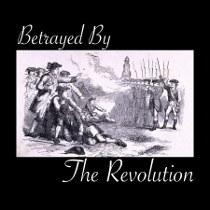Voices From the Archive

Slavery’s impact on America is almost impossible to overstate. Beyond the obvious personal impact on millions of the enslaved, the institution influenced almost every aspect of our past. In the centuries from the introduction of African slavery into North America until its formal ending in 1865, every law, custom, economic development, and cultural creation grew from a society that allowed for, and to varying degrees, supported and encouraged, the enslavement of people. Our students simply cannot understand our past or our present if they do not understand slavery.
Too often, however, classroom resources and textbook sections that examine slavery contain two crucial weaknesses. The first is that they often treat slavery as a whole or as a faceless institution. Students need study the individual lives of both the enslaved and those who profited from their bondage in order to see the complexity of the past. Doing so will help today’s students not only connect to the wider issues of slavery’s legacy in the present, but will engage them in the material in a manner that offers real opportunities for inquiry.
Often, secondary pedagogical resources on slavery also miss the mark by limiting the scope of the inquiry. Too many students are taught slavery history as a tidy morality play that pitted a dedicated and widely supported abolitionist northern population against a misguided and vaguely racist southern plantation elite, ending with the redemption of the Civil War and the 13th, 14th, and 15th amendments. This narrow telling of the story often then carries on later to a Civil Rights Movement unit that starts with Rosa Parks and ends with the Voting Rights Act of 1965.
This website offers teachers and students primary sources, secondary resources, and pedagogical options designed to make our classrooms inquiry-based sites of exploration of the nature and wide and enduring legacy of slavery. If we want our students to understand slavery, we first have to show them the many places where that legacy continues to influence our lives as Americans. Helping students see the connections to the past that survive the passage of time is the first step to hooking them into finding meaning in the study of history. Second, we need to give students the chance to investigate how individuals impacted by slavery navigated their lives. Finally, students need to examine slavery’s past through multiple and varied sources.



